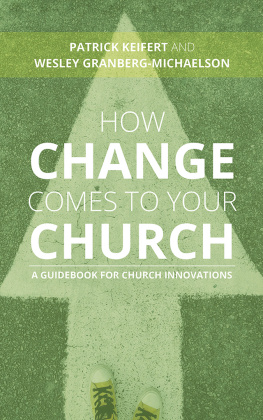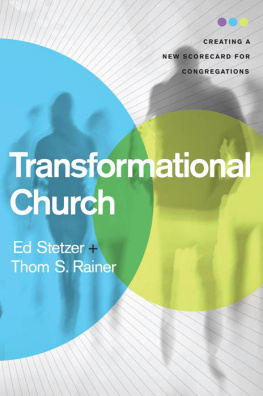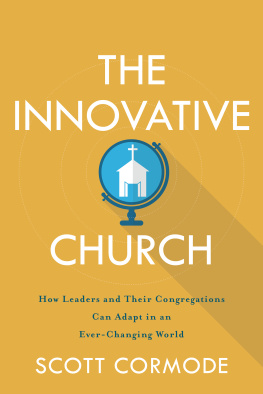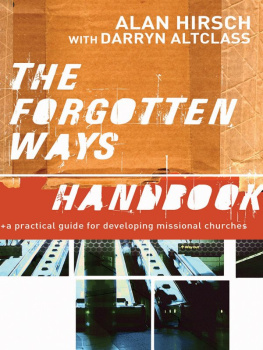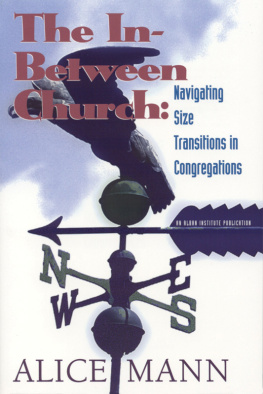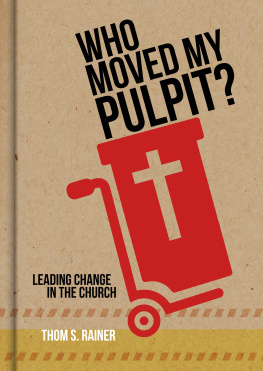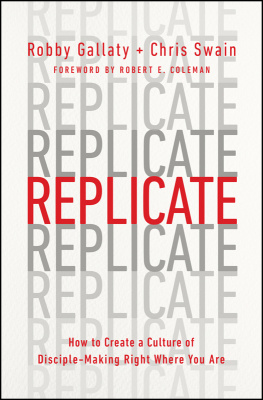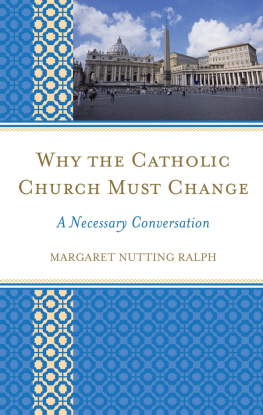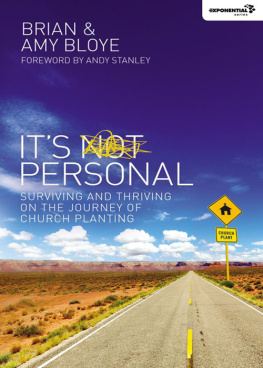The wisdom of years observing, listening, and engaging in debate and reflection become distilled into why changing church is needed and how it can happen. In two dioceses I have seen the deep value of this work. Read it and be blessed.
PAUL BUTLER, Bishop of Durham
This book and its authors offer a wealth of wisdom and experience on what it takes to make a church, a community, and a denomination work. They highlight the intense hard work of cultivating and maintaining a community but show that true change comes from action-focused transformation. In formulating where we want our churches and our world to go, we must first reconsider the ways in which our communities need to reflect our truest beliefs and how to act on them. Wes Granberg-Michaelson and Pat Keifert offer a series of challenges that are at once inspiring, practical, provocative, actionable, and hopeful. This is a handbook for what is called the missional church. It is a key resource for those pondering how they might actually put faith into action and contribute to communities that are radically transforming the world.
JIM WALLIS, Sojourners
While many of those who participate in North American churches agree that change is a necessary component of a vital and viable future, they are also perplexed with respect to identifying and bringing about the changes that are needed. In this very readable volume, two highly respected and seasoned leaders distill their years of wisdom in helping churches fruitfully navigate the challenges of change. An ideal volume for congregations seeking practical help in the quest for a more faithful and vibrant witness.
JOHN R. FRANKE,
Gospel and Our Culture Network
Keifert and Granberg-Michaelson channel a wealth of practical experience into guiding denominational and congregational change. Their recommendations offer deep wisdom to churches seeking missional transformation. In short, this book rings true. I recommend it very highly for pastors, denominational leaders, and church folks who seek guidance in this missional age.
DANA L. ROBERT,
Boston University School of Theology
Drawing on more than four decades of work with congregations, denominations, and other expressions of the church across the world, Pat Keifert and Wes Granberg-Michaelson have provided a profoundly helpful handbook for church leaders of all sorts and settings. This book is focused on discernment over strategic plans, reaches beyond programs and techniques to address the deep culture of communities, is rooted in communal and public spiritual practices, and is eminently practical. It really ought to be in the hands of every leader who knows that the transformation of the church is a life-or-death matter but isnt quite sure how to open the communities they serve to the transforming power of the Holy Spirit.
BISHOP WILLIAM GAFKJEN,
Indiana-Kentucky Synod, ELCA
This book is full of hard-won wisdom from two leaders who have spent decades successfully leading change in the church. Their core learnings are distilled here in an accessible, practical formlearnings that explain why so many change efforts fail. This is a profoundly hopeful book, grounded in Gods mission and drawing on the best organizational thinking.
DWIGHT ZSCHEILE,
Luther Seminary
A prophetic call to reconsider processes of congregational and denominational transformation, rooted in cultural change, discernment, and creative, non-anxious leadership. Keifert and Granberg-Michaelson provide not only a convincing account of the life-or-death issues facing churches but also clear, accessible, simple practices and ways of being that address such issues. Their approach promises a deeper participation in Gods missional activity among the people of God and thus a reclaiming of those purposes which are at the heart of the churchs vocation. A wonderfully engaging, timely, and hopeful book.
MIKE HARRISON,
Bishop of Dunwich
This isnt just a book for churches in the USA! As someone who has been working with the theology and practices outlined in this book for nearly ten years in the UK, I can testify to the veracity of the authors claims about how churches change. I have watched it happen, without any sense of a magic formula being applied, just the hard work of discerning what God is up to and joining in. This is also a book for denominational leaders as we hear how the systems that support local churches can also changedown to their very foundations. In fact, this book is highly applicable all over the world where churches face a changed world around them and have to find a godly way to respond. Read it, act on it, and be changed.
REV. CANON DR. NIGEL ROOMS,
Church Mission Society
How Change Comes
to Your Church
A Guidebook for Church Innovations
Patrick Keifert
and
Wesley Granberg-Michaelson
WILLIAM B. EERDMANS PUBLISHING COMPANY
GRAND RAPIDS, MICHIGAN
Wm. B. Eerdmans Publishing Co.
4035 Park East Court SE, Grand Rapids, Michigan 49546
www.eerdmans.com
2019 Patrick Keifert and Wesley Granberg-Michaelson
All rights reserved
Published 2019
252423222120191234567
ISBN 978-0-8028-7624-9
eISBN 978-1-4674-5679-1
Library of Congress Cataloging-in-Publication Data
Names: Keifert, Patrick R., 1950- author.
Title: How change comes to your church : a guidebook for church innovations / Patrick Keifert and Wesley Granberg-Michaelson.
Description: Grand Rapids : William B. Eerdmans Publishing Company, 2019. | Includes bibliographical references. | Summary: The authors identify key elements that are a necessary part of change within congregations and focus on the necessary alterations in church culture and innovative spiritual practices that establish the foundation for durable, missional changeProvided by publisher.
Identifiers: LCCN 2019022636 | ISBN 9780802876249 (trade paperback)
Subjects: LCSH: Church renewal. | ChangeReligious aspectsChristianity.
Classification: LCC BV600.3 .K45 2019 | DDC 262.001/7dc23
LC record available at https://lccn.loc.gov/2019022636
Contents
Starting Up Closea Congregational Story
Helen Booker is the president of Christ Church in a town of two thousand inhabitants. A nearly lifetime member of this congregation, she has recently retired from administrative leadership in the local school district and brings tremendous energy, life experience, and a deep abiding faith in Christ and his church, including her local Christ Church. She also joins a certain impatience to a practical willingness to work with people where they are in their lives.
Her impatience grows out of a sense that Christ Church continues to atrophy, not only in numbersin terms of both attendance and financesbut also in excitement and energy for mission and ministry. As a school administrator, she knows the community has a growing younger population, since the schools are stretching to serve a wider range of cultures, economic classes, and family patterns in her community. She sees the habits and physical space of Christ Church reinforcing the patterns of ministry developed over a century as an immigrant church, habits and physical space that no longer foster a lively, growing, Christian church in her rural community.
She has worked with other rural schools in settings in which population patterns are increasingly challenging for all civic and church organizations because young people leave and never return. In these communities, the median age of the inhabitants is rising, and real numbers are decreasing. The consolidation of schools has increasingly been the answer. The same pressure to consolidate churches in these areas has come from denominational executives and some members of local churches. Often, in strong reaction to denominational pressure to consolidate services, rural churches have refused to join reorganizational patterns from above. In several communities, this dynamic has led to an increasing number of congregations as local churches have splintered in struggles over survival and differences over various moral and cultural issues.

